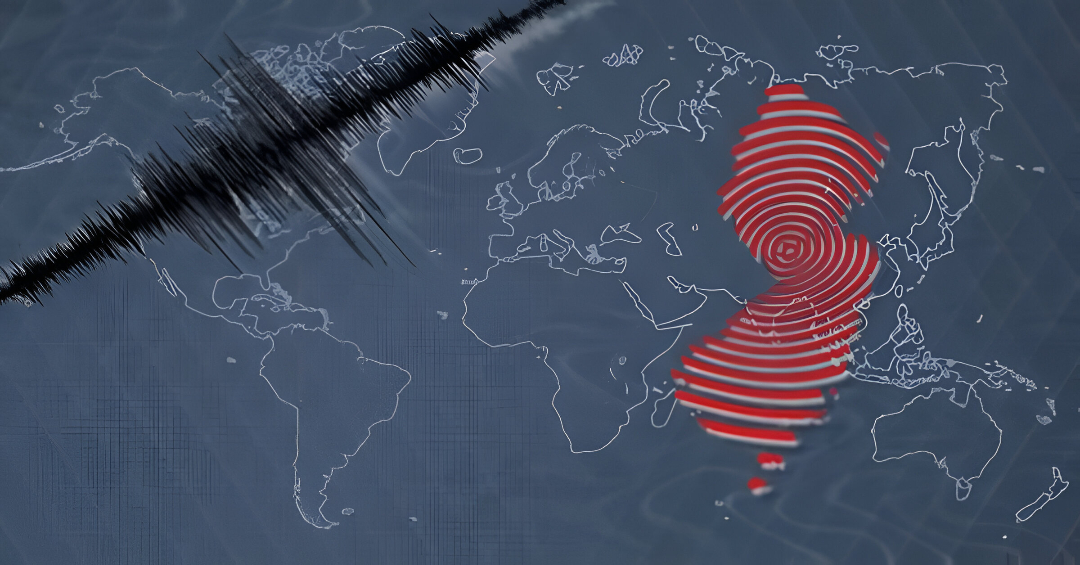On August 2, 2025, a 3.0-magnitude earthquake struck northern New Jersey, centered near Wharton in Morris County, according to the United States Geological Survey (USGS). The quake, which occurred at 1:49 p.m. EDT, was felt across parts of the state but caused no reported damage or injuries. This event marks the latest in a series of minor seismic activities in the region, raising questions about New Jersey’s geological stability and preparedness for future earthquakes. This article explores the details of the quake, its impact, and the broader context of seismic activity in the Northeast.
Details of the August 2 Earthquake
The earthquake hit at 1:49 p.m. EDT, with its epicenter located 3 miles southwest of Wharton, New Jersey, at a depth of approximately 3.1 miles (5 kilometers), per USGS data. The 3.0 magnitude classifies it as a minor quake, typically felt by residents but unlikely to cause structural damage. The USGS reported that the event was detected across northern New Jersey, with some residents in nearby towns like Dover, Rockaway, and Morristown reporting mild shaking.
According to NJ.com, over 1,200 people submitted “Did You Feel It?” reports to the USGS, describing sensations ranging from light vibrations to a brief jolt, similar to a passing truck. The quake’s shallow depth amplified its perceptibility, though its low magnitude ensured minimal impact. No emergency services were required, and local authorities confirmed no damage to infrastructure, as noted by The New York Times.
Geological Context of New Jersey Earthquakes
New Jersey is not typically associated with significant seismic activity, as it lies far from major tectonic plate boundaries like those in California. However, the state is situated near the Ramapo Fault Zone, a network of small faults running through northern New Jersey, southeastern New York, and eastern Pennsylvania. According to The Star-Ledger, this fault system is responsible for occasional low-magnitude quakes in the region, though it is considered less active than faults in seismically volatile areas.
The August 2 quake follows a 4.8-magnitude earthquake on April 5, 2024, centered near Whitehouse Station, Hunterdon County, which was felt across the Northeast, including New York City and Philadelphia. That event, the strongest in New Jersey since 1957, prompted renewed interest in the state’s seismic risks, as reported by Reuters. The 2025 quake, while smaller, underscores that minor tremors are not uncommon in the region, with the USGS recording about 10 to 15 such events annually in New Jersey.
Impact and Community Response
The 3.0-magnitude quake caused no reported injuries or property damage, a common outcome for tremors of this size. Residents in Morris County described feeling a brief shake, with some reporting rattling windows or furniture, per NJ.com. Social media posts on X noted light tremors in nearby areas, including Parsippany and Randolph, though many residents were unaware of the event until news reports emerged.
Local officials, including the Wharton Police Department, confirmed that no emergency calls were received related to the quake, as reported by Patch.com. The New Jersey Office of Emergency Management (NJOEM) monitored the situation but issued no alerts, given the quake’s minor nature. The absence of significant impact aligns with the USGS’s Modified Mercalli Intensity Scale, which rated the event at Intensity III, indicating weak shaking felt by some but not universally noticed.
Earthquake Preparedness in New Jersey
While New Jersey experiences fewer and less severe earthquakes than regions like California, preparedness remains a priority. The NJOEM encourages residents to follow standard earthquake safety protocols, including:
- Drop, Cover, and Hold On: During shaking, drop to the ground, take cover under sturdy furniture, and hold on until the shaking stops.
- Secure Heavy Objects: Anchor bookshelves, water heaters, and other items that could fall during a quake.
- Emergency Kits: Maintain supplies like water, food, and first-aid materials for at least 72 hours.
- Building Codes: Ensure homes and businesses comply with seismic-resistant construction standards, particularly in older structures.
According to The Philadelphia Inquirer, New Jersey’s building codes have been updated since the 1990s to account for seismic risks, though older buildings in urban areas like Newark may remain vulnerable. The 2024 quake prompted local governments to review infrastructure resilience, with Morris County officials conducting routine inspections of bridges and public buildings following the August 2 event, per NJ.com.
Historical Seismic Activity in the Northeast
The Northeast United States is considered a low-to-moderate seismic risk zone, with most earthquakes registering below 4.0 magnitude. The Ramapo Fault Zone, while active, is not associated with major tectonic activity, producing only small, shallow quakes, according to the USGS. Historical data highlights a few notable events:
- 1884 New York City Earthquake: A 5.2-magnitude quake, one of the strongest in the region’s history.
- 1957 New Jersey Earthquake: A 4.0-magnitude event near Burlington County, felt across the state.
- 2024 Whitehouse Station Earthquake: A 4.8-magnitude quake that shook the Northeast, with over 40 aftershocks.
The August 2025 quake, while minor, adds to this record, reminding residents of the region’s subtle but persistent seismic activity, as noted by The Washington Post.
Scientific Monitoring and Research
The USGS operates a network of seismometers across the Northeast, including stations in New Jersey, to monitor seismic activity in real time. The August 2 quake was detected by the National Earthquake Information Center, which provided precise data on its magnitude, depth, and epicenter. According to Columbia University’s Lamont-Doherty Earth Observatory, ongoing research into the Ramapo Fault Zone aims to better understand its potential for larger quakes, though experts assess the risk of a major event as low.
The USGS also uses crowd-sourced data from its Did You Feel It? platform to map the quake’s reach and intensity, helping scientists refine seismic models. This data confirmed that the August 2 event was felt up to 20 miles from the epicenter, primarily in Morris and Sussex counties, per NJ.com.
Public Awareness and Misinformation
The quake prompted a flurry of social media activity, with some posts on X exaggerating its impact or predicting aftershocks. The USGS and NJOEM issued statements clarifying that aftershocks were unlikely given the quake’s low magnitude, as reported by CBS News. Public education efforts emphasize the importance of relying on verified sources like the USGS for accurate information, particularly after recent misinformation about unrelated events, such as false eclipse claims, as noted by The Times of India.
Broader Implications for the Region
While the August 2 quake was minor, it serves as a reminder of the need for preparedness in the Northeast, where residents may be less familiar with earthquake protocols than in high-risk areas. The event also highlights the importance of infrastructure resilience, as aging buildings and bridges could face challenges in a stronger quake. Local governments are likely to continue investing in seismic monitoring and public education to mitigate risks, per The Star-Ledger.
Future Seismic Outlook
Experts predict that New Jersey will continue to experience minor quakes, with magnitudes typically below 3.5, due to the Ramapo Fault Zone’s activity. The USGS estimates a 1-2% chance of a magnitude 5.0 or higher quake in the Northeast over the next 50 years. While such an event could cause moderate damage in densely populated areas, the risk remains low compared to regions like the Pacific Northwest. Ongoing research and preparedness efforts aim to minimize potential impacts, as reported by The Philadelphia Inquirer.
Conclusion
On August 2, 2025, a 3.0-magnitude earthquake struck near Wharton, New Jersey, at 1:49 p.m. EDT, with a depth of 3.1 miles, according to the USGS. Felt across northern New Jersey, the quake caused no damage or injuries, with over 1,200 residents reporting light shaking. Centered in the Ramapo Fault Zone, the event follows a 4.8-magnitude quake in 2024, highlighting the region’s minor but persistent seismic activity. Local authorities confirmed no infrastructure damage, and the USGS deemed aftershocks unlikely. The quake underscores the need for continued preparedness and public education in the Northeast, where seismic risks are low but present.
Sources & References:
- NJ.com
- The New York Times
- Reuters
- The Star-Ledger
- Patch.com
- CBS News
- The Philadelphia Inquirer
- The Washington Post
- The Times of India
Author
-

Tyler Grayson brings global events to your screen with clarity, depth, and context. With a background in political science and international relations, Tyler covers diplomacy, global conflicts, climate issues, and major policy shifts with a balanced, facts-first approach. His reporting connects the dots between headlines and their real-world impact.







